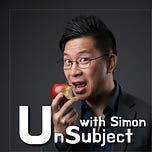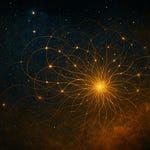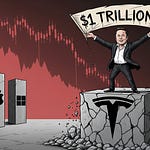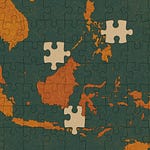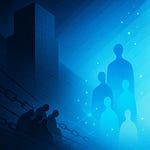It was 1954. Millions of Americans sat glued to their television sets as Senator Joseph McCarthy, once the most feared man in Washington, was humiliated during the Army–McCarthy hearings. “Have you no sense of decency, sir?” the famous rebuke rang out, and the chamber fell silent. For many, it was the moment the fever broke, when the republic seemed to reawaken from a nightmare of suspicion and silence. Yet the deeper story of McCarthyism is not about one demagogue brought low, but about the unsettling ease with which free people turned against the very liberties they had so recently celebrated as the essence of their national identity.
The United States, born of a revolution against tyranny and consecrated in the Bill of Rights, prided itself as the world’s beacon of liberty. And yet, within a few years of victory in World War II, it constructed elaborate loyalty programs, compelled citizens to sign oaths renouncing ideological sins, and allowed neighbors, colleagues, and artists to be branded “un-American” for the smallest hint of dissent. How could the land of Jefferson and Lincoln come to mirror, however faintly, the authoritarian systems it opposed abroad?
The answer lies in the dynamics of fear, power, and political expediency. The early Cold War was not simply a foreign policy conflict; it was an internal reckoning about who counted as “truly American” and how far the government could go in policing thought. The atomic bomb in Soviet hands, the “loss” of China, and the bloody stalemate in Korea stoked anxieties of betrayal from within. Political entrepreneurs seized the moment, weaponizing patriotism into suspicion, and suspicion into purge. Congress, the FBI, universities, Hollywood studios, and entire professions became arenas where liberty was curtailed in the name of protecting it.
But repression did not end with McCarthy’s downfall. The apparatus of surveillance and suspicion outlived him, shaping the boundaries of dissent for decades. And just as telling, the backlash against this era, expressed in the civil rights marches, student uprisings, and cultural revolutions of the 1960s and 1970s, was fueled by a generation determined never again to live in silence. McCarthyism was a wound and a catalyst. It scarred the republic, but it also provoked the most far-reaching reassertion of freedom in modern American history.
This essay asks a simple but disturbing question: why do free societies turn against their own freedoms? By tracing the rise, practice, and long shadow of McCarthyism, we can glimpse the fragility of liberty, and understand how American democracy, even in its most fearful moments, carries within it both the seeds of repression and the potential for renewal.
Seeds of Suspicion: The Cold War Domestic Context
The fear that gripped the United States in the late 1940s and early 1950s did not appear out of nowhere. To understand McCarthyism, we must first place ourselves in a world that seemed, to many Americans, to be unraveling.
Only a few years earlier, the United States had emerged from World War II as the undisputed leader of the “free world.” It had defeated Nazi Germany and Imperial Japan, possessed the world’s strongest economy, and held a monopoly on the atomic bomb. Americans believed they were living in a moment of triumph, with their ideals of liberty and democracy set to guide the world. Yet within a very short span of time, that sense of security collapsed into dread.
The Soviet Union, once a war ally, quickly became the United States’ primary adversary. In 1949, the Soviets shocked Washington by detonating their own atomic bomb, ending the U.S. monopoly on nuclear weapons years earlier than expected. That same year, China, the most populous country on earth, fell to Mao Zedong’s Communist Party, which American officials framed as a catastrophic “loss.” And in 1950, North Korea, backed by Moscow and Beijing, launched a surprise invasion of South Korea, pulling U.S. troops into a brutal war on the Korean Peninsula. To many ordinary Americans, it seemed as though communism was advancing everywhere, and that America’s survival was suddenly at stake.
But there was another, deeper anxiety: the possibility that America’s enemies were already inside the gates. The idea of “enemies within” became a powerful narrative. If China could “fall,” perhaps it was because of traitors in the State Department. If the Soviets could develop an atomic bomb so quickly, perhaps it was because spies had handed them secrets. The infamous case of Alger Hiss, a former high-ranking State Department official accused of being a Soviet agent, and the trial of Julius and Ethel Rosenberg, executed for passing atomic secrets to Moscow, cemented the fear that betrayal was not just theoretical, it was real.
The government’s own policies amplified this climate of suspicion. In 1947, President Harry Truman, himself a Democrat and often accused of being “soft” on communism, launched a sweeping Federal Employee Loyalty Program. This required government workers to prove their loyalty and allowed officials to investigate, even dismiss, employees suspected of “subversive” ties. No actual evidence of espionage was necessary. Mere association with the wrong organization could cost a person their livelihood. It was the first nationwide attempt to institutionalize loyalty screening, and it set the precedent that political orthodoxy was now a condition of employment.
These measures were not isolated. They reflected a larger cultural mood: Americans had learned to conflate unity with safety. To disagree, to dissent, to appear different in thought or association was suddenly dangerous. It was not just a matter of politics but survival. This atmosphere of fear and conformity prepared the ground for McCarthy’s meteoric rise. When he claimed that communists had infiltrated the government, he was not inventing a new fear. He was tapping into anxieties already deeply rooted in the American psyche.
The Rise of McCarthy and Political Opportunism
When Joseph Raymond McCarthy entered the national spotlight in 1950, he was hardly a household name. Born in 1908 on a Wisconsin farm, he rose from humble origins to study law, practice briefly, and then enter politics. During World War II he served as a Marine Corps officer in the Pacific, earning the nickname “Tailgunner Joe” for his combat flights, though even this part of his biography was later revealed to be heavily embellished.
By 1946, McCarthy was elected to the U.S. Senate as a Republican and his fortunes changed in February 1950, when, at a Republican Women’s Club speech in Wheeling, West Virginia, he claimed to have a list of 205 known communists working in the State Department. The number itself shifted in his later retellings, but the headline-grabbing claim electrified audiences. At a moment when Americans were already fearful of betrayal within, McCarthy offered a simple, dramatic answer. The enemy was not just abroad, it was in Washington, and he alone was brave enough to expose it.
McCarthy rarely produced verifiable evidence, but his accusations were crafted in ways that forced others to prove their innocence. This inversion of justice, where suspicion itself became condemnation, was enormously powerful in the climate of the early Cold War.
Several factors amplified McCarthy’s rise:
Institutional timing: The Republican Party, out of power since the 1930s, was hungry for a wedge issue against Democrats. McCarthy’s accusations allowed them to portray Truman’s administration as weak and compromised.
Media dynamics: Newspapers and, increasingly, television carried McCarthy’s dramatic charges into living rooms across America. For journalists chasing headlines, McCarthy’s bombast was irresistible.
Bureaucratic allies: J. Edgar Hoover’s FBI shared McCarthy’s zeal for rooting out communists, and though Hoover disliked McCarthy personally, the FBI’s surveillance programs lent credibility to the atmosphere of suspicion.
By the early 1950s, McCarthy had turned his Senate committee into a stage for televised interrogations. Careers were destroyed, reputations ruined, and institutions, from the State Department to the Army, were paralyzed by fear of his investigations. McCarthy had no grand strategy, but he wielded fear like a weapon, and in an America unsettled by global shifts, fear proved a potent political currency.
The Machinery of Fear
McCarthy may have provided the spark, but the firestorm of the early 1950s was fueled by forces much larger than a single senator. Fear of communism seeped into the very fabric of American institutions, political, cultural, and social, creating an environment where liberty was curtailed not by a dictator’s decree but through countless small acts of compliance, intimidation, and silence. What emerged was not an authoritarian state imposed from above but a self-reinforcing culture of suspicion, in which ordinary citizens and powerful institutions alike learned to police thought as well as behavior.
One of the strongest tools was the loyalty oath. Following President Truman’s Federal Employee Loyalty Program of 1947, thousands of government workers were required to affirm that they had no ties to “subversive organizations.” The practice soon spread. State governments, universities, and even local school boards adopted their own loyalty requirements. The University of California became infamous for demanding that its faculty swear an oath renouncing communism. Professors who refused, not because they were communists, but because they objected to political tests as a matter of conscience, were dismissed. Freedom of thought itself was transformed into a liability; to question the oath was to invite suspicion.
The entertainment industry became another frontline in the battle for ideological conformity. The House Un-American Activities Committee (HUAC) staged sensational hearings into alleged communist influence in Hollywood. The result was the creation of blacklists, informal but devastating rosters of writers, directors, and actors denied work if suspected of leftist sympathies. The “Hollywood Ten,” a group of screenwriters and directors who refused to testify before HUAC in 1947, were imprisoned for contempt of Congress. Others, faced with the impossible choice between their careers and their principles, agreed to testify against friends and colleagues. What had once been celebrated as a bastion of artistic freedom was remade into a system of surveillance, where silence could mean unemployment and speaking out could mean exile.
The culture of fear extended well beyond the halls of Congress or the studios of Hollywood. It reached neighborhoods, schools and workplaces. Neighbors reported on neighbors, coworkers whispered about suspicious activities, and union leaders were pressured to purge members accused of communist sympathies. Churches, too, entered the fray, portraying the Cold War as a cosmic struggle between Christianity and godless communism. Citizens who had once attended leftist meetings during the Great Depression, or who subscribed to radical journals years earlier, suddenly found their pasts weaponized against them. Parents warned their children to avoid controversial conversations at school. In this climate, dissent was no longer just risky, it was branded un-American.
The media magnified the spectacle. Televised hearings and newspaper coverage turned accusations into headlines and public theater. Journalists reported McCarthy’s charges as fact, rarely demanding evidence. Sensational coverage of espionage trials, like those of Alger Hiss or the Rosenbergs, reinforced the impression that communist agents lurked everywhere. For years, the press acted more as an amplifier than a check on hysteria. Only later, in Edward R. Murrow’s 1954 broadcast confronting McCarthy, did television play a countervailing role. By then, the damage had been done: suspicion had been normalized, and silence had become the safest response.
Perhaps the most insidious effect of this machinery of fear was psychological. Ordinary Americans learned to internalize the lesson that deviation was dangerous. The sociologist David Riesman described the “other-directed” personality of the 1950s, an individual perpetually scanning for social approval, anxious to conform. McCarthyism transformed that cultural trait into a political weapon. To stand out, to think differently, was to invite scrutiny. To be safe was to blend in.
This was why McCarthy was never truly acting alone. He was the face of a system that extended from Washington to Hollywood, from universities to unions, from government offices to dinner tables. Even after McCarthy himself was disgraced, the machinery did not disappear. It endured, shaping American politics and society well into the 1960s. McCarthy may have fallen, but the fear he embodied lived on.
The Survival of McCarthyism After the Fall of McCarthy
For years, Joseph McCarthy seemed untouchable. His accusations dominated headlines, his hearings intimidated officials, and few dared to challenge him directly. Yet by the mid-1950s, the tide began to turn. McCarthy’s greatest strength, his flair for accusation without evidence, ultimately became his undoing once he overreached.
In 1954, he trained his sights on the U.S. Army, accusing it of harboring communists. Unlike earlier targets, the Army was respected, well-defended, and equipped with the institutional weight to resist. The resulting Army–McCarthy hearings, broadcast on national television, brought McCarthy into American living rooms day after day. Millions watched as he interrupted witnesses, badgered officials, and hurled accusations without proof. The turning point came when Joseph Welch, the Army’s chief counsel, rebuked him with the searing words: “Have you no sense of decency, sir, at long last? Have you left no sense of decency?” The chamber erupted in applause. For many Americans, it was the first time McCarthy had been publicly and decisively shamed.
Later that year, the Senate delivered its own rebuke by voting to censure him, an extraordinary act of discipline against one of its own. Once Washington's most feared man, McCarthy quickly became an isolated and diminished figure. His health, already fragile, deteriorated rapidly, worsened by heavy drinking. In 1957, only three years after his censure, he died at the age of forty-eight. To many, his fall seemed to close an ugly chapter. The newspapers that had once echoed his charges now ran obituaries tinged with relief, as if the nation could breathe freely again.
Yet this impression was deceptive. McCarthyism did not end with McCarthy. The machinery of fear he had mobilized, the loyalty oaths, the blacklists, the institutional suspicion of dissent, remained intact. The House Un-American Activities Committee continued its investigations well into the 1960s. The FBI under J. Edgar Hoover expanded its surveillance network, now targeting not only suspected communists but also civil rights leaders, student radicals, and later, anti-Vietnam protesters. Martin Luther King Jr., the Black Panthers, and countless student activists discovered that the same logic of suspicion that had once haunted the State Department now pursued them.
This persistence reveals a sobering truth: McCarthy himself was never the true architect of repression. He was its opportunistic face, its loudest practitioner, but not its only author. The anxieties of the Cold War, the bipartisan terror of seeming “soft” on communism, and the willingness of institutions to police their own members, all these forces outlived him. In this sense, his downfall removed the demagogue but left intact the structures he exploited.
The years after his death only reinforced this paradox. The civil rights movement, the campus uprisings of the 1960s, and the antiwar protests of the 1970s all collided with the remnants of the apparatus he had helped normalize. Protesters were branded “un-American,” dissenters were placed under surveillance, and activists were harassed. The shadow of McCarthyism shaped both the government’s tactics and its opponents' resolve.
McCarthy’s collapse, therefore, highlights an unsettling paradox of democracy: it can reject the demagogue while preserving the very tools he used. His disgrace restored some faith in the Senate and gave the illusion of a return to normalcy, but the deeper lesson was clear. Once the machinery of fear is set in motion, it can outlast the man who set it spinning.
The Backlash andTransformations
The fall of McCarthy did not mean the end of McCarthyism. The machinery of fear persisted through the late 1950s, but repression has a paradoxical tendency: in suppressing dissent, it also breeds resistance. The silence of the 1950s was not permanent. By the 1960s, a younger generation, raised in the shadow of loyalty oaths and political orthodoxy, began to demand the freedoms that had been denied to their parents. The two decades that followed McCarthy’s disgrace became a period of rebellion, expansion, and renewal, an era in which Americans pushed back against the culture of conformity that had defined the early Cold War.
The civil rights movement was one of the first major challenges to the lingering structures of McCarthyism. From its earliest days, segregationists and opponents of civil rights smeared activists as communists, claiming they were part of a broader subversive plot. Martin Luther King Jr. himself was relentlessly surveilled by the FBI, which deployed the very tools refined during the Red Scare to discredit him. Yet the movement endured. And in enduring, it helped shift the nation’s understanding of freedom. When the Supreme Court in NAACP v. Alabama (1958) struck down a state’s attempt to force the civil rights organization to reveal its membership lists, the Court did more than protect activists, it repudiated the logic of guilt by association that had been central to McCarthyism. In defending the right to organize and speak freely, the civil rights movement carved out new legal and cultural space for liberty.
The rebellion spread to campuses. Students in the early 1960s confronted administrators who enforced rules limiting political activity, restrictions that bore the unmistakable mark of Cold War-era suspicion. In 1964, students at the University of California, Berkeley launched the Free Speech Movement after being barred from distributing leaflets about civil rights and politics. Their professors remembered the loyalty oath controversies of the late 1940s, when colleagues had been dismissed for refusing to swear anti-communist pledges. For students, this history became a warning: they would not live under the same shadow. The Free Speech Movement soon spread nationwide, fusing with opposition to the Vietnam War and the broader counterculture. Where the 1950s had demanded silence, the 1960s made dissent not only permissible but virtuous.
The Vietnam War intensified this transformation. Critics of the conflict were often accused of being “un-American,” echoing McCarthy’s old language. Yet unlike the 1950s, when such charges could end careers, the scale of dissent in the late 1960s was too large to suppress. Millions marched in the streets, students occupied campuses, musicians wrote protest songs that defined a generation. If McCarthyism had made suspicion the price of speaking out, the Vietnam era made silence seem complicated.
The judiciary played an equally important role in dismantling the remnants of McCarthyism. In Brandenburg v. Ohio(1969), the Supreme Court ruled that speech could only be punished if it incited “imminent lawless action,” raising the bar far beyond the vague accusations of subversion that had justified repression in the 1950s. Decisions like this effectively buried the legal foundations of political purges, ensuring that dissent, however unpopular, was constitutionally protected.
Beyond politics and law, culture itself exploded in defiance of conformity. The arts and music of the 1960s and 1970s embodied a hunger for authenticity and freedom. Folk singers like Pete Seeger and Bob Dylan gave voice to protest; rock musicians like Jimi Hendrix and Janis Joplin embodied rebellion. In literature and film, artists who had once been silenced by blacklists reemerged to critique authority. What had been driven underground during the McCarthy years now resurfaced with a vengeance, transforming the nation’s cultural landscape.
By the 1970s, the United States was in many ways unrecognizable from the America McCarthy had sought to control. The civil rights movement had dismantled Jim Crow, students had won greater freedoms on campus, the courts had expanded the meaning of free speech, and the culture had embraced dissent as part of national identity. Ironically, the suffocating atmosphere of the 1950s had made such an outpouring not just possible but inevitable. McCarthyism had sought to silence; its legacy was a generation determined to speak louder than ever before.
The Cultural Counter-Reaction
If politics and courts dismantled parts of the McCarthyite system, it was culture that most vividly dramatized America’s rebellion against conformity. The suppression of the 1950s created a hunger for expression. By the 1960s and 1970s, artists, writers, filmmakers, and musicians seized the opportunity to reclaim the voice that had been stifled. In doing so, they not only responded to McCarthyism but also expanded the very meaning of freedom in American life.
Literature offered one of the earliest challenges to the atmosphere of suspicion. Arthur Miller’s The Crucible (1953), written at the height of the Red Scare, used the Salem witch trials as a thinly veiled allegory for McCarthyite hysteria. Its enduring popularity testified to the resonance of his message: that fear could turn a community against itself, destroying justice in the process. A few years later, the Beat Generation took the revolt further. Writers like Allen Ginsberg and Jack Kerouac rejected the restrained, “normal” lives celebrated in the 1950s, embracing experimentation in style and subject matter, sexual freedom, spiritual seeking, open rebellion. Their prose and poetry embodied the principle that to be truly American was to defy orthodoxy.
Hollywood, once a target of purges and blacklists, also reinvented itself. The very industry that had fired writers and actors for their alleged sympathies became a site of daring cultural critique. In the 1960s and 70s, directors pushed boundaries, creating films that questioned authority and satirized Cold War anxieties. Stanley Kubrick’s Dr. Strangelove(1964) ridiculed the paranoia of nuclear brinkmanship, while Easy Rider (1969) celebrated freedom on the open road, thumbing its nose at the staid respectability of the previous decade. Where once Hollywood had been policed, it now policed the guardians of conformity.
Music became perhaps the most powerful weapon of cultural resistance. Folk singers like Pete Seeger, once hounded by HUAC, returned as mentors to a new generation. Bob Dylan’s protest anthems, Blowin’ in the Wind, The Times They Are A-Changin’, articulated the frustrations of youth and the demand for change. Rock musicians went further, making defiance itself part of their performance. Jimi Hendrix’s incendiary guitar solos and Janis Joplin’s raw voice gave sound to a cultural revolution. Music, portable and communal, reached into living rooms, dormitories, and public squares, uniting dissenters in a way congressional hearings could not silence.
The visual arts also reflected the shift. Abstract expressionists like Jackson Pollock had already broken with convention in the late 1940s, but their chaotic canvases gained new resonance in the context of cultural rebellion. By the 1960s, pop artists such as Andy Warhol subverted consumer culture itself, suggesting that conformity had infiltrated even the supermarket and the television screen. Art became another form of political defiance, rejecting the rigid molds of the McCarthy years in favor of experimentation and play.
The broader cultural effect was transformative. Where difference had once been dangerous, by the late 1960s it was celebrated. Where silence had once meant safety, expression now meant survival. The counterculture not only filled the vacuum left by political repression, it reversed it, making dissent central to America’s self-image.
The cultural counter-reaction did more than heal the wounds of McCarthyism; it redefined what it meant to be free. By insisting on creativity, authenticity, and rebellion, artists and audiences alike ensured that liberty would no longer be confined to the narrow boundaries set in the early Cold War. McCarthy had sought to enforce sameness. The generations that followed him made difference itself into a form of freedom.
Legacies of McCarthyism
McCarthyism outlived McCarthy, not as a single campaign but as a set of attitudes, practices, and structures that reshaped American political culture. Even decades later, the very word “McCarthyism” remained a synonym for repression by accusation, invoked whenever fear was used as a weapon against dissent.
One of its most enduring legacies was the suspicion directed at intellectuals and dissenters. Professors, artists, and journalists never fully escaped the stigma that McCarthyism had stamped upon them. Though the blacklists eventually faded, the idea that intellectuals were “out of touch” or “un-American” lingered stubbornly. During the campus uprisings of the 1960s, the critics of the Vietnam War in the 1970s, and even the feminist and gay rights movements that followed, activists were often accused of threatening “real America.” This reflex to equate dissent with disloyalty was a direct inheritance of the McCarthy years.
The second legacy was institutional. The FBI, which had expanded its reach during McCarthy’s time, never returned to its pre-Red Scare scale. Under J. Edgar Hoover, the FBI developed extensive surveillance programs such as COINTELPRO (1956–1971), targeting civil rights leaders, student activists, and political radicals. Martin Luther King Jr. was harassed and monitored, the Black Panthers were infiltrated, and Vietnam protesters were tracked and discredited. The machinery of loyalty checks, files, and suspicion built in the late 1940s had become the blueprint for a permanent national security state, one that outlasted the Cold War itself.
Just as influential was the style of politics McCarthy had embodied. He had shown that paranoia could be a potent weapon, and others carried this lesson forward. Richard Nixon, whose early career was forged in the anti-communist battles of the late 1940s, brought that suspicion into the White House. His infamous “enemies list” and obsession with leaks revealed the same mentality that once fueled McCarthy’s accusations: opponents were not legitimate rivals but internal enemies to be neutralized. The Watergate scandal, in many ways, was a continuation of McCarthyite politics by other means. Later, in the 1980s, Ronald Reagan revived Cold War rhetoric about the “evil empire,” and conservatives once again accused liberals of being “soft” on communism, language that echoed McCarthy almost word for word. After 9/11, the same logic resurfaced under a new guise: the Patriot Act expanded surveillance, Muslim-Americans faced suspicion, and dissent against the “War on Terror” was often treated as disloyal. Each time, the pattern repeated: liberty was curtailed in the name of protecting it.
So deeply did McCarthyism shape American consciousness that the term itself became part of the national lexicon. To call an opponent’s tactics “McCarthyite” was to accuse them of guilt by association, of reckless accusation, of fear-mongering. Yet the persistence of the term underscored how deeply the phenomenon had embedded itself in the country’s political imagination. From the “witch-hunts” of the 1990s culture wars to contemporary debates about terrorism, immigration, and surveillance, the ghost of McCarthyism lingered, ready to be summoned whenever suspicion could be turned into political advantage.
The legacy of McCarthyism, then, is profoundly double-edged. It left behind wrecked careers, damaged institutions, and a culture of suspicion that corroded trust. But it also provoked resistance. Civil rights protections were strengthened, free speech rulings were broadened, and a culture of dissent became central to American identity in the decades that followed. McCarthyism revealed democracy at its most fragile, yet paradoxically helped spark the resilience that kept it alive. It remains both a cautionary tale and a reminder: liberty can be undone by fear, but fear can also awaken the determination to defend liberty anew.
Liberty’s Fragility in the Twenty-First Century
McCarthyism was once thought of as a uniquely mid-century episode, a dark chapter neatly sealed with the senator’s disgrace and death. Yet its legacy reaches forward, reminding us that liberty’s greatest threat often comes not from foreign enemies but from fear within. Today, as America enters a new period of turmoil, what some call a second Cold War, this time with China, the echoes of McCarthyism are unmistakable.
The culture wars of contemporary America have produced a climate disturbingly familiar to students of the 1950s. The recent death of Charlie Kirk, which sparked both condemnation of violence and fierce attacks on his ideas, revealed the raw intensity of political polarization. On both the left and the right, there are fanatical voices ready to justify censorship: some demand silencing through government machinery and regulation, while others flirt openly with intimidation and violence. The tools may differ from the loyalty oaths and blacklists of McCarthy’s era, but the impulse is the same, to brand opponents as dangerous, and to narrow the boundaries of acceptable speech.
Social media has amplified these dynamics, turning suspicion and outrage into viral currency. Where newspapers and television once carried McCarthy’s accusations into every home, algorithms now do the work, amplifying division and rewarding the most extreme voices. Politics, in this environment, grows increasingly detached from the lives of ordinary people, who are less concerned with ideological purity than with the simple desire to live, work, and speak freely without fear.
This is the warning history offers. The radicalization of politics, the belief that only one side possesses truth and that the other must be silenced, creates the same conditions that made McCarthyism possible. In the 1950s, it was communism that became the rallying cry of fear; today, it may be ideological enemies at home or geopolitical rivals abroad. The labels change, but the pattern endures. Liberty, in moments of fear, is always the first casualty.
If McCarthyism teaches us anything, it is that democracies survive only when they resist the temptation to silence. A republic does not strengthen itself by narrowing the circle of permissible thought; it weakens itself, leaving citizens alienated and politics untethered from the reality of people’s lives. To look back at McCarthyism is to see how quickly liberty can be hollowed out, and to recognize, with urgency, that the pressures of our own time can lead us down the same road.
The challenge for contemporary America is not simply to win arguments or defeat opponents, but to preserve the very space in which arguments can be made. Freedom of speech, freedom of conscience, and freedom of dissent are not luxuries. They are the lifeblood of a democracy. The danger of McCarthyism was never just the man, it was the machinery of fear. And that machinery, in new forms, is humming again. The question is whether we have learned enough from history to resist it.

